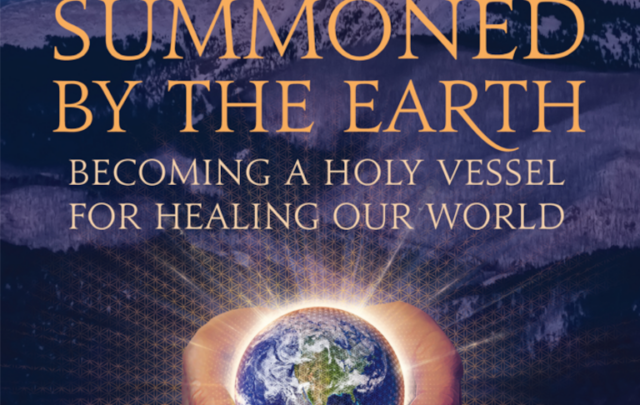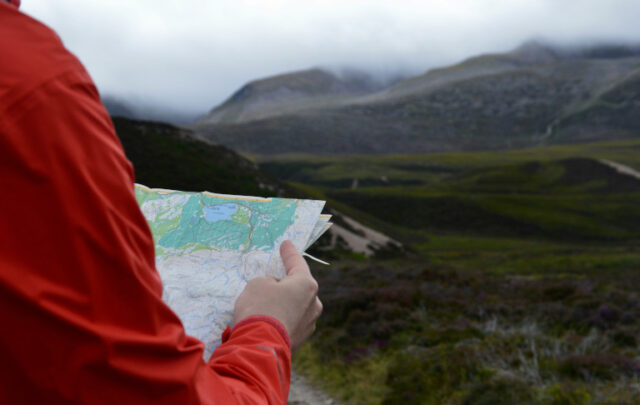SUMMARY: "Reality 101" with Nate Hagens, our minds, our world, the fossil trap. Scientists Alexander "Sandy" MacDonald of NOAA and Chris Clack of CIRES: yes we can power America with solar and wind power.
This week on Radio Ecoshock we’ll see how hard it is, and how possible it is, to get out of the matrix. Resilience expert Dr. Nate Hagens talks about his college course "Reality 101".
Then we visit with two top American scientists whose recent study was published by the government-funded National Oceanic and Atmospheric Administration. A detailed study of sun and wind says yes we can replace fossil and nuclear power with renewable energy, and it won’t cost any more than what we are doing now.
Thanks for joining us this week as we explore where we really are, and what we could do about it.
NATE HAGENS: REALITY 101
I don’t know about you, but I’m often stuck on Bob Dylan’s words: "something is happening here, but you don’t know what it is". Wouldn’t it be great if we could take a course to understand reality?
The course exists. Dr. Nathan J. Hagens teaches "Reality 101 – A Survey of the Human Predicament" to graduate students at the University of Minnesota. Nate Hagens is a familiar name to anyone who tracks energy and resilience. Nate was a successful Wall Street trader. He left all that in 2003 to probe deeper. Nate is on the Board of Directors of the Post Carbon Institute, a Director of the Bottleneck Foundation, and he teaches. He’s working on a book that he doesn’t want to talk about yet. Hagens lives on a farm in Wisconsin with a collection of animals.
I first learned about Nate from speeches made at Peak Oil conferences. We talk about that a bit. But the bigger problem here is the big problem – the nexis of threatening developments that seem too large to grasp. We have guests that see everything in terms of energy. Others focus only on the environment. I’ve talked with a few eco-psychologists. Nate is one of the few who attempt to wrap them all up together.
The course begins with the real overview: the first photos of Earth from space. Then it gets into "Systems theory and complexity" with a combination of You tube videos and Nate’s own unreleased writing.
A QUESTION OF EXTINCTION
There is a course section on geologic time, and paleclimatology. Dr. Peter Ward, a several-time guest on Radio Ecoshock, is twice featured in the syllabus. I’ve got Peter lined up for a return trip to Radio Ecoshock soon. He’s one of the few scientist to crystalize a working theory of how mass extinctions in the past really worked. They all developed through climate change, except for the great asteroid strike in the Gulf of Mexico about 65 million years ago. And even there, the dying animals (including dinosaurs) and plants may have already been weakened by a planetary warming that began a few million years before the asteroid hit.
You can watch a video interview I did with Dr. Peter Ward on this page. Here are the two key interviews with Peter Ward on Radio Ecoshock, as audio files: "Under a Green Sky" (2008) and "The Medea Hypothesis" (25 minutes)(2009). This are still very valid and powerful today.
In the course "Reality 101" there is a segment on mass extinction. I ask Nate Hagens where he stands on the idea of human extinction, either this century, as suggested by Dr. Guy McPherson, or in the near-coming centuries? If I can summarize Nate’s reply, it would be that humans are very ingenious and adaptable. He doesn’t think there is any basis for worrying about a near-term extinction, certainly not in this century. But please listen to the interview to get it in Nate’s own words.
COPING WITH A STONE AGE MIND
I watched a "Reality 101" course video about evolutionary psychology. It is a You tube interview with John Tooby and Leda Cosmides on "Stone Age Minds". Contrary to some tenets of psychology, they say the human mind arrives not as a blank slate, but with structures designed to cope with problems of a hunter-gatherer society. Tooby and Cosmides talk about mismatches between our ancient mental capabilities and the newly-minted modern world. That could explain a lot. Find that video here on You tube, courtesy of Reason.tv
Nate also offers his students an unpublished (yet) article "The Psychological Roots of Resource Overconsumption". You won’t find that anywhere online, but it may appear in Nate’s upcoming book "Bottleneck".
Then we have to consider how many of our problems dealing with the world are based on sexuality and addiction.
A PROSPEROUS WAY DOWN?
On Resilience.org I found another text required in the course. It’s called "A Prosperous Way Down" by Howard and Elisabeth Odum. Actually, that article is a short-form introduction to their book of the same name. Is there a prosperous way down, and why should we accept going "down" at all? Nate explains why we either throttle back consumer society by choice and plan – or we collapse into a very nasty chaos.
The students wrap up the "Reality 101" course with a group discussion "What to do as individuals". That’s a big one. As Nate wrote in an email to me: "What does a rational, non-sociopathic human facing the multiple bottlenecks of the 21st century DO?" Talk among yourselves.
There seem to be only two doors: (1) we keep on going and trust the next generation will figure things out, or (2) we are so completely doomed we might as well enjoy the end of days. Some of us hope there is a third door, but is there really?
This interview is kind of a warm up, for a longer interview I hope to do with Nate Hagens, when he and his co-author bring out their new book "Bottleneck" later this year.
Download or listen to this 30 minute interview with Nate Hagens in CD Quality or Lo-Fi
Nate has a Masters Degree in Finance from the University of Chicago, and a Ph.D. in Natural Resources from the University of Vermont. He left Wall Street money to become an alternative social critic. His personal web site is called "The Monkey Trap" (which is seldom updated).
Here is a cool Nate Hagens You tube talk, given for the Worldwatch Institute. I also like "The Converging Economic and Environmental Crisis" July 2014 found here.
DR. ALEXANDER "SANDY" MACDONALD AND DR. CHRISTOPHER CLACK
Scientists say wind and solar CAN power America
Wouldn’t it be great if most of the electricity generated in America came from wind and solar, instead of climate-wrecking fossil fuels? Of course it can’t be done, except it can. Who says so? Hippies from California? Not quite.
It’s all in a new paper by a former senior scientist at NOAA, the National Oceanic and Atmospheric Administration, and a physicist/math whiz from CIRES, The Cooperative Institute for Research in Environmental Sciences, at the University of Colorado Boulder. Our guest are Dr. Alexander MacDonald, known as "Sandy", the recently retired director of NOAA’s Earth System Research Lab, and Dr. Christopher Clack from CIRES – all in Boulder Colorad
We talk about a new article titled "Future cost-competitive electricity systems and their impact on US CO2 emissions" published online in the journal "Nature" on January 25th, 2016.
Maybe the best way to begin is to give you the links sent to me by the Public Affairs Officer at NOAA Communications. My thanks to Theo Stein for getting me up to speed on this breaking paper.
The NOAA/CIRES press release is here.
"At the bottom of the CIRES release are animations of solar potential, wind potential and a power flow animation showing how a system dominated by renewables and supported by a HVDC grid might dispatch power around the country to meet demand."
The FAQ is here.
CIRES also put together this brief video explainer.
THE BIG NEWS ABOUT ALTERNATIVE ENERGY IN AMERICA (and everywhere else)
So what is the big news?
(1) The United States could power at least 80% of it’s energy needs, maybe more with just solar energy and wind power. That’s amazing and encouraging but there’s more.
(2) Electricity from this system would not cost any more than it does today.
(3) Nuclear plants could be shut down. All coal-fired power could be closed. Only a few gas generators to pick up occasional slack would be needed.
(4) massive power storage would NOT be needed. That’s a huge break-through.
(5) no new technology is required. We have the tools and we know how.
This system would require the construction of nation-spanning DC High Voltage lines. Current AC transmission lines are incredibly wasteful, losing up to half of all power created. And because AC cannot transmit power efficiently, (a) you have to build nuclear plants dangerously close to cities and (b) AC line cannot bring wind power from the central plains to New England (for example).
High Voltage DC lines already exist. There is one in Alberta Canada, and one running from Oregon to California. It’s not unknown or untested tech. We can do it.
The real breakthrough comes from studying weather, in great detail, on a very big scale (across the United States). NOAA and CIRES has all the weather data to do it. They did and this paper is the result. So if you study alternative energy just within one state, it won’t work to replace what we have. But if you look at national resources, and have a way to transmit them, it’s all possible.
Of course the sun only shines during the day. But it turns out that the wind is strong enough at night to keep things going (when demand is lower anyway). We don’t need storage, these two scientists say.
Just check out their press release, the short video, and their great maps and you’ll see the future of energy.





